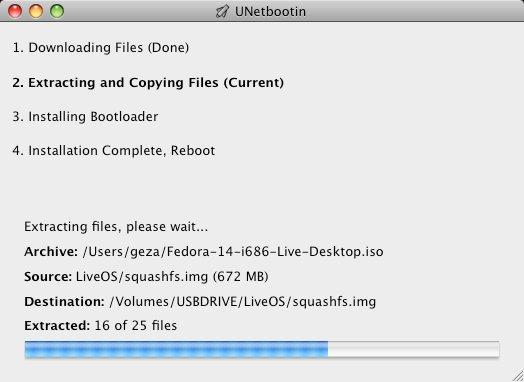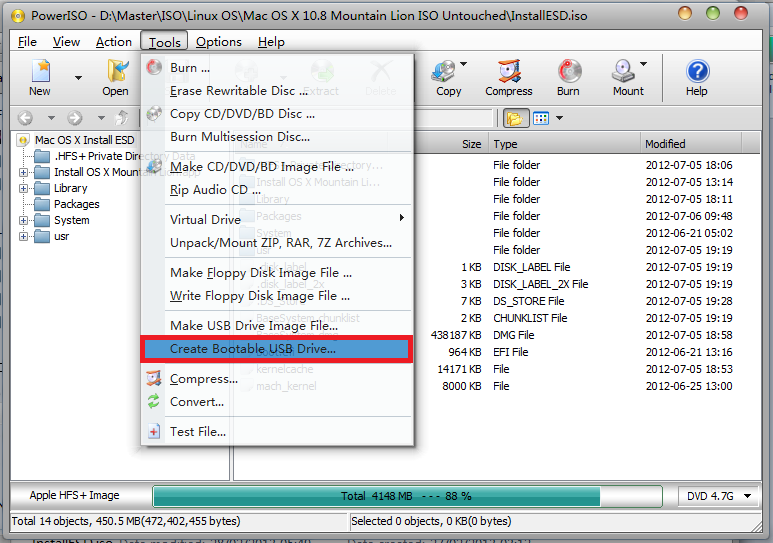

- Write usb bootable linux mac os x how to#
- Write usb bootable linux mac os x install#
- Write usb bootable linux mac os x iso#
- Write usb bootable linux mac os x download#
- Write usb bootable linux mac os x free#
Then enter the following command and hit enter: If you get an error message, and you’re running a newer OS, go to Applications > Utilities and open the Terminal app.
Write usb bootable linux mac os x download#
Write usb bootable linux mac os x free#
They are free to download from each distribution’s main website. Some of the top options are Ubuntu, Mint, or Deepin.

If you are using a newer Mac, you might be asked to add a volume. You can find this button at the top of the window.
Write usb bootable linux mac os x how to#
Here’s how to do that: How to Partition your Mac Hard Drive In order to do this, you will have to partition your main hard drive.
Write usb bootable linux mac os x install#
If you have a Mac, and you would like to explore a new, open-source OS, check out our guide on how to install Linux on a Mac.īoot Linux and macOS, you will need to create a space for your Linux OS to It offers several advantages over Windows and Mac, such as flexibility, privacy, better security, and easy customization.
Write usb bootable linux mac os x iso#
Provide a downloaded Ubuntu ISO file, connect a USB drive, and the tool will create a bootable Ubuntu USB drive for you.Linux is an open-source operating system that you can install on your computer for free. Just open the Dash and search for the “Startup Disk Creator” application, which is included with Ubuntu. If you’re already using Ubuntu, you don’t need to do this from Windows. How to Create a Bootable USB Drive on Ubuntu You can also take it to another computer and boot Ubuntu from the USB drive on that computer. Next, restart your computer and boot from the USB drive using these instructions. You can click “Close” to close Rufus when it’s done. Rufus will create the bootable USB drive. RELATED: How to Boot Your Computer From a Disc or USB Drive (If you forgot to back up your data, click “Cancel”, back up the data on the USB drive, and then run Rufus again.) Click “OK” to continue if the drive has no important data on it. You’ll be warned that all data on the USB drive will be erased.

Just select the default option-“Write in ISO Image Mode (Recommended)”-and click “OK”. Rufus will ask how you want to write the image. There are many tools that can do this job for you, but we recommend a free program called Rufus-it’s faster and more reliable than many of the other tools you’ll see recommended, including UNetbootin. How to Create a Bootable USB Drive on Windows For installing Linux to your PC, this is fine-but if you want a live USB that keeps your changes so you can use it regularly on different computers, you’ll want to check out these instructions instead. When you run it, none of your chances (like installed programs or created files) will be saved for the next time you run it. NOTE: This process creates a traditional live USB drive. RELATED: How to Create a Live Ubuntu USB Drive With Persistent Storage If you’re not sure which one to download, we recommend the LTS release.īelow, we’ll show you how to turn this ISO into a bootable flash drive on both Windows or an existing Linux system. Head to Ubuntu’s download page and download the version of Ubuntu you want-either the stable “Long Term Service” release or the current release. You’ll need to download an ISO file to do this-we’re going to use Ubuntu in our example, but this should work for quite a few different Linux distributions.


 0 kommentar(er)
0 kommentar(er)
